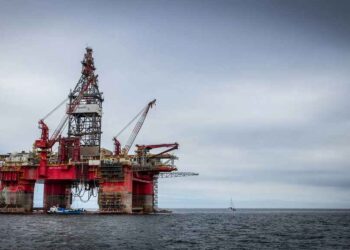The 109km Arad-Szeged gas pipeline runs between Arad in western Romania and Szeged in Hungary. The pipeline was officially inaugurated in October 2010. The 700mm-diameter pipeline has an annual design capacity of 4.5 billion cubic metres.
The pipeline initially carries 1.7 billion cubic metres of gas at the rate of 500,000m³/h from Hungary to Romania. It is also capable of carrying gas in the other direction with certain modifications at the Romanian end. The maximum design pressure of the pipeline is 6.3mpa.
An investment of €68m was made in the project. The EU provided €17m through the European Energy Economic Recovery Programme (EERP). The Arad-Szeged gas pipeline is the first project to be implemented under the EERP. The EU has been supporting projects which help in improving energy infrastructures of the central and eastern European region.
Romania consumes approximately 17-18 billion cubic metres of natural gas annually. Russian gas imports constitute 20%-25% of this consumption. The pipeline connects Romania’s gas transport system with Europe. As a result, Romania need not be dependent on natural gas supplied by Russia through Ukraine. The pipeline will also increase competition and enable gas to be imported at lower prices.
“The Hungarian section is 47km-long and runs between Algyo and Csanádpalota.”
Construction and infrastructure
Design and planning works were initiated in 2008 with archaeological excavation works commencing in 2009. Construction commenced in the first quarter of 2009. Pipes were also delivered during this period.
The Romanian section of the pipeline is 62km from Horia (near Arad) to Nadlac near Csanadpalota on the Romanian-Hungary border. It was divided into different sections during construction. The Romanian section includes one gas metering station at Horia and a compressor station at Jupa. It also includes an underpass at the Danube river.
The Hungarian section is 47km-long and runs between Algyõ and Csanádpalota. It was built at a cost of €32.4m and was completed in December 2009. This section includes a commercial metering station at Csanádpalota. Construction of the Hungarian section was completed in February 2010.
The pipeline was originally scheduled for inauguration in July 2010 but delays in construction on the Hungarian section of the pipeline pushed the completion date. Test operations of the pipeline were carried out in August 2010 when Romania received small quantities of gas from Hungary.
Local contractors were employed for construction of the pipeline.
Partners
MOL Group, a unit of FGSZ Natural Gas Transmission, is the operator of the Hungarian section of the pipeline. Transgaz serves as the operator of the Romanian section.
“The Arad-Szeged gas pipeline is the first project to be implemented under the EERP.”
MOL and Transgaz signed a memorandum of understanding in January 2008 to connect the two sections of the pipeline.
The final investment decision on construction of the pipeline was made towards the end of 2008. Both the companies financed the construction costs of the pipeline. Transgaz financed 46% of the costs of the Romanian section.
Supply contract
OMV Petrom, E.ON, GDF SUEZ Energy Romania and MOL Energy Trade have booked the capacity of the Romanian section of the pipeline. Capacity of the Hungarian section has been booked by GDF SUEZ, MOL, E.ON and EconGas.
Developments
Construction of the pipeline was part of MOL’s New Europe Transmission System (NETS) initiative which aims to connect the various gas networks in the region. The NETS initiative is expected to develop a uniform regional gas market in the region. It is also expected to increase security of supply in south and central eastern Europe.
A number of smaller pipelines and interconnections are being planned to establish a uniform regional gas market. The Croatian-Hungarian interconnection pipeline is currently being implemented. Feasibility study for the Hungarian-Slovakian interconnection is also being developed.

















































